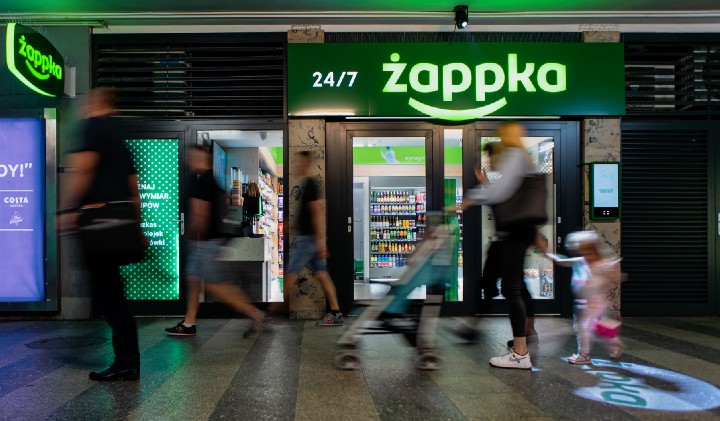
08 Nov How Autonomous Retail Can Help Define Your Location Strategy
Where a retail store is located can make or break the business. Choosing the right location helps retailers reach their target customers effectively and maximize profits. Between malls, shopping centers, freestanding kiosks, business parks, and more, retailers have many new ways to serve an increasingly diverse customer base in a given location.
A strong location strategy can help business leaders outperform their competitors who might not be able to serve a network as large and diverse.
Autonomous stores can be placed in locations previously unavailable to retailers, with faster deployment timelines and lower overhead costs, enabling them to reach their target customer at the right time, in the right location, with the right products. This provides customers with convenient and highly varied shopping experiences.
Here’s how autonomous stores can serve retailers and some of the most important things business leaders need to develop an effective location strategy.
Tools That Can Help Retailers Meet Their Business Goals Through Location Strategy
Industry and Competitor Data
Retailers must navigate an extremely competitive business environment to be successful. Business leaders can ensure that their location strategies are in line with the demands of their clientele by tracking the actions of their competitors. If a competitor opens a store in a new location, they might have spotted an opportunity that others have not. Tracking your competitors and the moves other industry players are making can keep you agile and abreast of shifts in location strategies of key competitors.
The Resources to Deploy Stores Over Numerous Locations
Large retailers often have resources and can usually afford to open multiple stores in different locations and formats to serve the needs of each customer segment. However, smaller retailers have to plan their location strategy with more care and understanding of how each store feeds into a larger business plan.
An In-Depth Understanding of Customer Preferences
 Customer demographics are changing and each customer segment has a unique set of needs and preferences. Location strategy, like any other business strategy, must align with those needs. For instance, customers from the baby boomer and millennial generations are more likely to prefer to purchase goods from a physical store compared to their counterparts. Understanding customer preferences and location demographics can help businesses plan their store placements more effectively.
Customer demographics are changing and each customer segment has a unique set of needs and preferences. Location strategy, like any other business strategy, must align with those needs. For instance, customers from the baby boomer and millennial generations are more likely to prefer to purchase goods from a physical store compared to their counterparts. Understanding customer preferences and location demographics can help businesses plan their store placements more effectively.
6 Ways Autonomous Retail Can Help You Craft a More Effective Location Strategy
1. Use Previously Untapped Locations by Expanding Distribution Opportunities
Retail opportunities can present themselves in a variety of verticals such as the workplace, education, travel, and sports events. Each of these verticals requires a different approach and a unique store. Large scale events are also often held in temporary event locations. Easily deployable and completely portable autonomous retail stores can help retailers of all sizes and types retain flexibility in their location strategy and reach their customers in different settings.
2. Enable Quick-Commerce Opportunities by Getting Inventory Closer to Customers Wherever They Are
Industry research shows that while more than half of consumers prefer to shop in physical stores, 76% of shoppers still shop online. This is often a result of a lack of availability for the preferred options in their preferred locations. Low-cost autonomous store deployments with minimal physical footprints allow retailers to build quick-commerce stations that can serve customers at their preferred locations and times.
3. Fill in the Gaps in Your Location Portfolio
Many retail businesses aim to serve the needs of a diverse customer base and are often limited by their ability to build, staff, and operate enough stores to meet these customers’ demands. Autonomous retail provides business leaders with the scalable solution they need to fill gaps in existing location portfolios. It also provides retailers with the opportunity to expand into new markets and locations without a vast investment.
4. Increase Retail Footprint in Locations and Gain an Advantage Over Competitors
Ecommerce platforms and stable interest in physical stores have created an incredibly competitive business environment for retailers. Large businesses used to have the advantage over smaller retailers as they were able to build a widespread presence with multiple locations across the country. However, AiFi’s NanoStore has leveled the playing field by making autonomous retail and quickly deployable stores accessible for businesses with limited resources.
5. Your Resources Over More Locations With Less Demanding Autonomous Stores
A global talent shortage has made it difficult for retailers to staff stores across multiple locations. This limited retailers’ ability to expand with the desired speed and efficiency. Autonomous retail allows businesses to open new stores in profitable locations with long opening hours while keeping staffing requirements low or eliminating them all together. The data that autonomous stores can deliver also helps businesses create planograms and control inventory more effectively to encourage higher sales across all retail locations.
6. Quickly Deploy Autonomous Stores in High Footfall Locations With Higher Average Spending
High footfall locations such as transportation hubs, business centers, and tourist attractions provide retailers with opportunities to reach customers who, on average, spend more money per transaction. Self-contained autonomous stores can help retailers reach these customers with rapid deployment and low human resource requirements.
Be Where Your Customers Are With a Rapid NanoStore Deployment Today
AiFi’s NanoStore enables better location planning for retailers by delivering quickly deployable and scalable solutions for modern retailers. Retailers can rapidly deploy stores with low overhead costs and small footprints in locations with high footfall and limited space. The completely portable, pre-equipped store solution enables retailers to reach new audiences while retaining the option to move the store should evolving customer and operational requirements demand it.
Find out how our technology can help you expand your retail footprint and learn more on our How It Works page. If you found this article interesting, please share it on social media.





















